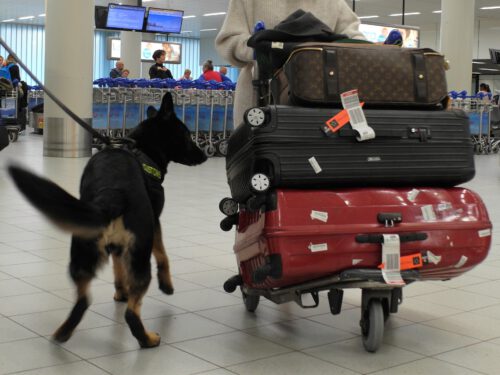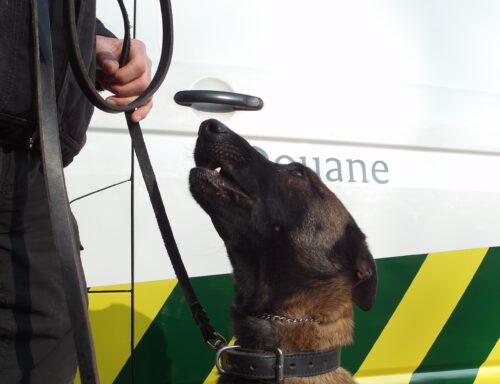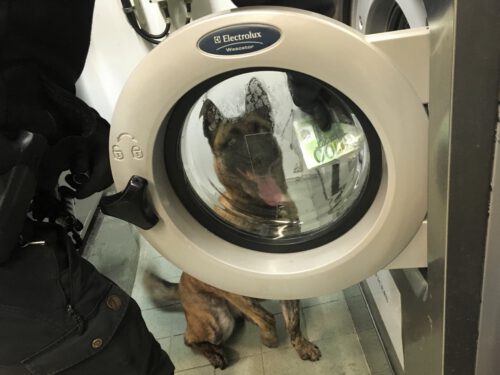WOOF! – A NOSE FOR CUSTOMS WORK
This exhibition on Dutch Customs’ sniffer dogs was a true family event, with a high cuddliness factor. The spotlight was turned on sniffer dogs and their handlers, and visitors got an insight into the work of dog and man alike.
The exhibition
Woof! highlighted the different types of sniffer dogs and their work areas, with an added focus on teaching and training. The exhibition was built around 5 pens in which visitors could experience in full the work of a tobacco dog, drug dog, money dog and wildlife sniffer dog through film footage, special catches and even the scents of the substances the dogs detect.Working with sniffer dogs
Since 1945, Customs has been using sniffer dogs to combat the import of prohibited goods and identify excise fraud. Dogs’ tremendous sense of smell makes them an effective tool in the work of Customs. Sniffer dogs are deployed at external borders, the port of Rotterdam and at Schiphol Airport, where they search the cargoes of vehicles, containers, ships and aircraft. And the dogs sniff passengers and their hand luggage too, on trains, ferries and at airports.Teaching & Training
A sniffer dog works with a regular handler throughout its life. That means they train together and take exams together. Sniffer dog handlers are experienced Customs officers with at least four years’ experience in physical inspections. The dogs’ training sessions are focused on general obedience and the skills needed in their work areas, such as climbing high stairs on container ships. They also need constant training to keep their nose sharp.Drug dogs
Customs’ first drug dogs in the 1970s were soft-drug dogs. There were two types of soft drugs on the market back then: hashish and marijuana. Since that time, drug dogs have been trained to detect six different soft and hard drugs: hashish, marijuana, heroin, cocaine, amphetamines and XTC. Some dogs are versatile and can detect different types of drugs. Others, on the other hand, are specialised in detecting one specific drug.Tobacco and precursor dogs
Tobacco dogs are trained to detect shipments of illegal cigarettes and other tobacco products such as raw tobacco, rolling tobacco and cigarettes. The skills set of tobacco dogs has been expanded to include detecting precursors, ingredients from which drugs like XTC are made. These dogs examine storage areas like containers, sheds and storage units. They are also used in house searches and checks of postal and parcel services.Money dogs
In 2005, Customs introduced money dogs as a tool in the fight against money laundering and to thwart terrorist money flows. Money dogs are trained to detect all kinds of paper money and cheques. Specially developed notes with the same scents as regular banknotes are used to train these dogs. The scents come from the printing ink and cotton paper used. Other payment forms like cheques and bank drafts are made of the same material.Wildlife dogs
There are only two sniffer dogs in the whole of the Netherlands that are trained to detect animals and products made from protected animals. Examples include: animal skins, birds’ eggs and live reptiles. There are many different animal species and items, all with their own smell, making wildlife detection one of the most difficult disciplines.Photo display
There was also a photo display built around Woof! featuring other special dogs alongside sniffer dogs. The display focused on the diverse work of dogs as rescuers, reliable workers and best friends. For example, images of emotional support dog Niels, guide dog Lenno, assistance dog Peggy and Bumpertje, the famous police puppy, were all on show.







